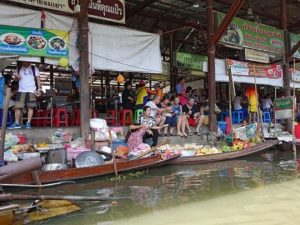- MN ABE Connect
- Archive
- Diana’s ELL Writing Routine: Days 1-5
 November 26, 2018
November 26, 2018
Diana’s ELL Writing Routine: Days 1-5
Diana Mulcahy, ESL Teacher Marn Frank, Literacy & STAR CoordinatorFrom Marn:
In our October article, Diana and I introduced her FREE Google site called Diana’s ELL Writing Practice. In this article, we describe what Days 1-5 look like within her 10-day ELL Writing routine. Our final article in January of 2019 will describe what Days 6-10 look like.
A small body of writing research supports a set of principles for effective writing instruction. Four are summarized below, followed by Diana’s description of how she embeds them in Days 1-5. Even if you can’t offer a writing routine, we hope knowing more about “ideal” lessons is beneficial. Then you can adapt and adjust them to the reality of your class schedule and student population.
From Diana:
1. Set clear writing goals and structure writing activities or interactions to motivate learning and practice.
 I have several writing goals for my Beginning and Intermediate ELLs (English language learners). First, I want them to use as much class time as possible for writing, since I believe the only way to become a better writer is to write. Second, I want them to use the planning, revising, and editing steps of the writing process. So often they want to churn something out quickly and be done with it. Third, I want them to feel confident in talking about their writing, working to improve it, and helping classmates to do the same. Lastly, I want all students, but especially those with limited formal education, to feel supported and truly enjoy writing. These are big goals. I don’t delude myself that I am reaching all of them all the time. I am constantly learning that I can do better.
I have several writing goals for my Beginning and Intermediate ELLs (English language learners). First, I want them to use as much class time as possible for writing, since I believe the only way to become a better writer is to write. Second, I want them to use the planning, revising, and editing steps of the writing process. So often they want to churn something out quickly and be done with it. Third, I want them to feel confident in talking about their writing, working to improve it, and helping classmates to do the same. Lastly, I want all students, but especially those with limited formal education, to feel supported and truly enjoy writing. These are big goals. I don’t delude myself that I am reaching all of them all the time. I am constantly learning that I can do better.
The end product of my ten-day writing routine is a comparison paragraph. To get there, we follow a path that balances teacher instruction time with student production time. Within instruction, we work on both sentence-level and paragraph-level skills. I think of it as zooming in and zooming out. We also work on grammar, but generally within the context of students’ own writing.
2. Use approaches that capitalize on the relationships between language, reading, and writing skills.
 On Day 1, we start with a picture [perhaps similar to the one shown here]. It shows an outdoor market in Asia where people are selling fruits and vegetables. Many people are transporting their products in small boats on a river. It’s a colorful and engaging picture. We talk about what we see, and I write a reasonable number of vocabulary words on the board. Then each student writes five sentences about the picture. I give students who are newer to basic sentence structure a few frames to fill in. (“There are many _______ in the _______.”)
On Day 1, we start with a picture [perhaps similar to the one shown here]. It shows an outdoor market in Asia where people are selling fruits and vegetables. Many people are transporting their products in small boats on a river. It’s a colorful and engaging picture. We talk about what we see, and I write a reasonable number of vocabulary words on the board. Then each student writes five sentences about the picture. I give students who are newer to basic sentence structure a few frames to fill in. (“There are many _______ in the _______.”)
Then students pair up and read their best sentence. This activity gets them comfortable with sharing their work, and it supports peer-editing down the road. Having them choose their best sentence is a form of self-assessment, which is a skill they need in order to do revision. Their last task of the lesson is to work with a partner, and then the whole group, to identify which words are nouns, verbs, adjectives, etc. Having this academic vocabulary helps us talk about their writing in the editing stage.
3. Explicitly teach (explain, model, guide, apply) the knowledge, skills, and strategies needed to be a proficient writer.
On Day 2, we work on a grammar lesson for adjectives, which uses the vocabulary words from the picture. There are some sentence frames for them to fill in, illustrating various sentence structures. I also present some student sentences from the day before that have errors. (“The weather is a sunny.”) We use our academic vocabulary to talk how to improve them, and we also share what is good about each one. (“It has a capital and a period.”)
On Day 3, we have another discussion about the picture related to main idea. We review what we have said and written about this market. As we talk, I write the comments onto a wheel-shaped graphic organizer, projected for the class. Most of the comments (it’s colorful, the weather is good, the food looks fresh) eventually lead us to the main idea that this market is a fun place to shop. The process is then repeated with different comments (it’s too crowded, you could fall in the water) leading to a different main idea. The discussion illustrates that all details must fit together with the main idea. It also introduces how to use the graphic organizer. Then I hand out a short paragraph I have written about the picture, and we briefly talk about its structure using academic language (topic sentence, supporting details, etc.)
On Day 4, we again focus on grammar, this time for comparisons. The handout uses vocabulary related to the picture. It moves from individual words (fresh/fresher, crowded/more crowded) to sentence frames (“The river market is __________ than Cub Foods.”) to the final activity where students write their own sentences using comparative adjectives. I urge them to move away from the topic of the picture and suggest comparing other things: items in the room, people they know, two countries, etc. At the end, they share their best sentences with a partner, and I collect their work.
4. Encourage peer support for and feedback on planning, drafting, editing, and revising.
On Day 5, I return their work with my written feedback about the targeted grammar. Then I give them a handout with a collection of sentences that need editing. We use the same process as before; using academic vocabulary to talk about the errors and pointing out the correct features. This time, though, we start working as a group and then move to pair work. To scaffold the task, I use several strategies as I move around the room: asking guiding questions, circling the areas of the sentences that need attention, going to the board to write a quick sentence frame, and encouraging them to refer to the model sentences or my feedback on the handout from the day before.
Reference:
National Research Council and the National Academies Press. (2012). Developing READING and WRITING (pages 13-16). Download the free booklet at https://lincs.ed.gov/professional-development/resource-collections/profile-188

Newsletter Signup
Get MN ABE Connect—the official source for ABE events, activities, and resources!
Sign UpArticle Categories
- ABE Foundations/Staff Onboarding
- ACES/Transitions
- Adult Career Pathways
- Assessment
- CCR Standards
- Citizenship
- COVID-19
- Cultural Competency
- Digital Literacy/Northstar
- Disabilities
- Distance Learning/Education
- ELA
- Equity/Inclusion
- ESL
- HSE/Adult Diploma
- Listening
- Math/Numeracy
- Mental Health
- Minnesota ABE
- One-Room Schoolhouse/Multilevel
- Professional Development
- Program Management
- Reading
- Remote Instruction
- Science
- Social Studies
- Speaking/Conversation
- Support Services
- Teaching Strategies
- Technology
- Uncategorized
- Volunteers/Tutors
- Writing